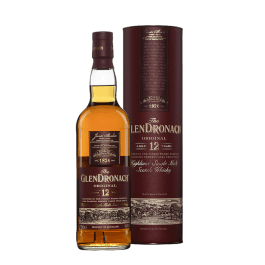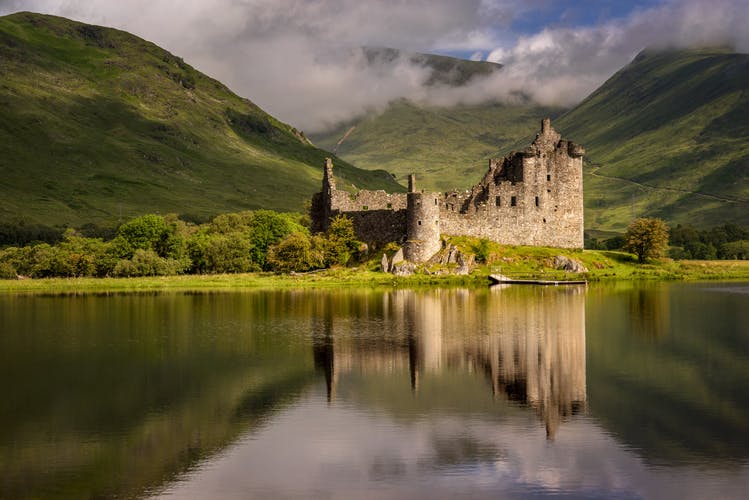
Scotland is undeniably the largest whisky producer in the world. With over 150 active distilleries, it is difficult to know them all.
In this article, we explore 5 distilleries that have shaped the history of the whisky industry.
The history of the Macallan distillery
In 1824, Alexander Reid, a local farmer, founded the Macallan distillery on the banks of the River Spey in Scotland.
While legal whisky distilleries already existed before the Excise Act of 1823, its aim was to create fair competition conditions for distillers, provide a source of income for grain producers in Scotland, and ultimately ensure supply.
Like many others in Scotland, Alexander applied for and secured a lease for seven acres on the Easter Elchies estate and received permission to build his own distillery there.
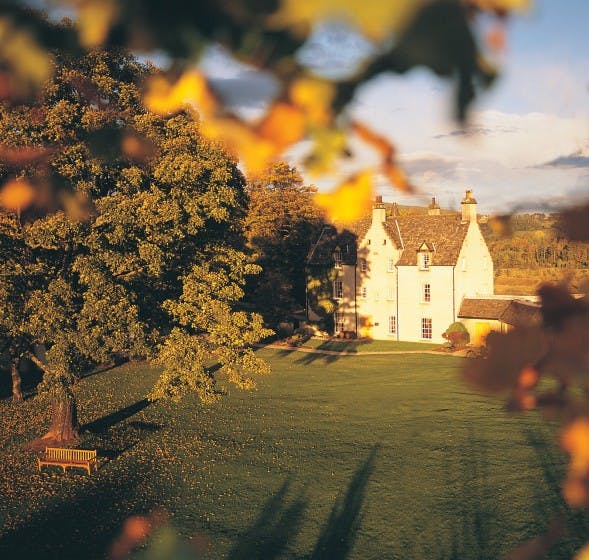
Over the following twenty-three years, while managing his farming activities, he continued to distil and refine his whisky, using local barley and sourcing water from a Spey tributary, the Ringorm burn.
In 1847, after Alexander Reid’s death, James Priest and James Davidson took over the distillery, ensuring the continuity of the business. Then, in 1868, James Stuart stepped in.
Until his death in 1892, James Stuart owned and ran the distillery. He kept the operations steady, and thanks to a consistent pace, the distillery managed to produce around 40,000 gallons per year (approximately 103,800 litres of alcohol), despite using relatively small stills for the time.
The 20th century did not spare Macallan, which faced the First and Second World Wars, Prohibition, and the Great Depression. Despite these challenges, figures like Janet Harbison took the helm with resilience, steering the distillery through the storms with a firm hand and clear vision.
It was at the end of the 20th century that the distillery's story took a decisive turn under the leadership of Allan Shiach, from 1979 to 1997.
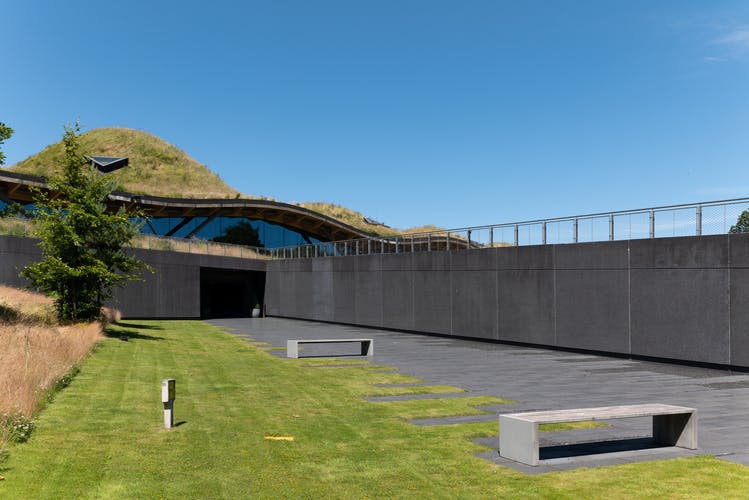
During this period, he propelled the company’s reputation to a global scale, making The Macallan a highly sought-after whisky, recognised as one of the finest in the world. This rise was built notably on their historical expertise in sourcing sherry casks, a skill that has become their true hallmark.
In 1999, Macallan came under the ownership of the Edrington Group, following its acquisition from Highland Distillers. This move paved the way for significant investments in modern infrastructure (including a new distillery in 2014), enabling the distillery to expand its production capacity.
Today, The Macallan distillery reaches a production capacity of up to 15 million litres of alcohol per year, despite the size of its 15 stills, which do not exceed 3.5 metres.
A flagship whisky of the Macallan distillery.
THE MACALLAN 12 YEAR OLD DOUBLE CASK
Macallan has built its reputation on the use of sherry casks for maturing its single malts, giving them a warm profile with notes of dried fruits, spices, and rancio (leather, undergrowth, etc.).
The distinctive character of the Double Cask comes from the union of sherry-seasoned European oak and American oak casks, a balance that defines the Double Cask range.
Thanks to the higher proportion of American oak, the Macallan Double Cask 12 Year Old stands out with a unique smoothness compared to other Macallan expressions, offering particular richness and roundness.
The history of the Bruichladdich distillery
Born in the heart of the golden age of Scotch whisky, Bruichladdich distillery was established in 1881 thanks to the efforts of the Harvey family from Glasgow. Located on the west coast of Islay, it stood out for its relative isolation, having long been the only distillery on this part of the island before the opening of Kilchoman.
In contrast, other iconic distilleries such as Lagavulin, Laphroaig, Ardbeg, and Caol Ila are located on the east coast.
Also owners of the Dundashill and Yoker distilleries in Glasgow, the family retained control of Bruichladdich until its closure in 1929.
It reopened in 1936 before being mothballed from 1995 to 2001.
The year 2000 marked a turning point with the purchase of the distillery by a group of enthusiasts, led notably by Mark Reynier, for £7.5 million from Jim Beam Brands. A complete renovation was then undertaken, preserving all the original equipment.
The revival of Bruichladdich in 2001 marked the beginning of a new era, allowing the distillery to regain its former level of production.
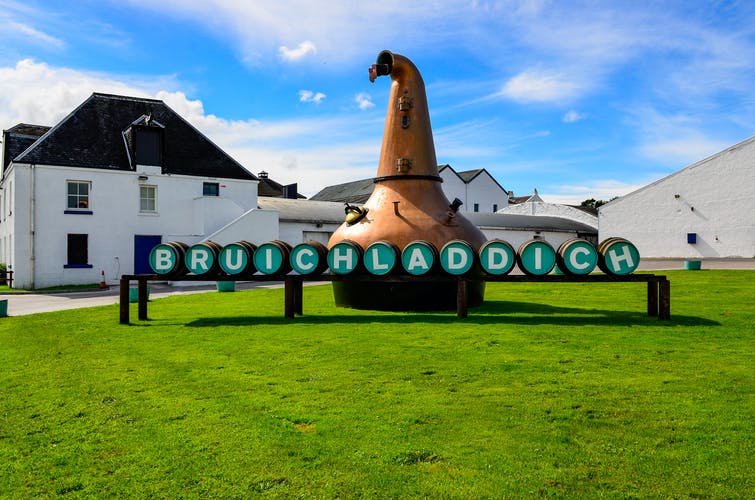
Today, producing over 460,000 litres of pure alcohol annually and with a maximum capacity of 2 million litres thanks to its four stills, Bruichladdich surpasses industrial standards through its artisanal approach, employing around fifty people—more than any other distillery on the island, and more than most in Scotland.
Standing out for its use of up to twelve different varieties of barley, including locally grown barley highlighted in the annual Local Barley edition, Bruichladdich reaffirms its commitment to authenticity and terroir. Its eco-friendly approach is also reflected in the reuse of its hot water and the adoption of anaerobic methods to convert waste into biogas.
The distillery further distinguishes itself by producing three distinct single malts, each representing a specific peat profile: Bruichladdich, unpeated; Port Charlotte, with pronounced peat; and Octomore, renowned as one of the most heavily peated whiskies in the world. It’s worth noting that Port Charlotte and Octomore take their names from former distilleries on the island, thus continuing Islay’s heritage.
A flagship whisky of the Bruichladdich distillery.
BRUICHLADDICH CLASSIC LADDIE SCOTTISH BARLEY
Bruichladdich stands out among Islay single malts because it is unpeated. Without the powerful smoky aromas often associated with whiskies from the small island, the saline profile is free to fully express its briny and iodised notes.
This edition of Bruichladdich single malt, made exclusively from Scottish malted barley, draws its inspiration from the Islay Barley and Organic Scottish Barley releases.
Bottled at 50% ABV and without an age statement, this young whisky reveals a fresh, vibrant character with pronounced maritime and floral notes.
The history of the Laphroaig distillery
In 1815, on the island of Islay, Donald and Alexander Johnston founded the Laphroaig distillery, selecting a prime location near Laphroaig Bay, crucial for access to the raw materials needed for distillation.
In 1836, after selling his shares to his brother Donald, Alexander Johnston emigrated to Australia, leaving Donald as the sole master at the helm, carrying an ambitious vision for Laphroaig. Upon his death in 1847, he passed his legacy on to his family and friends on Islay.
Despite its growing reputation, the distillery navigated a complex period at the end of the 19th century. Most of Islay’s malt was destined for blends, and Laphroaig was no exception to this practice.
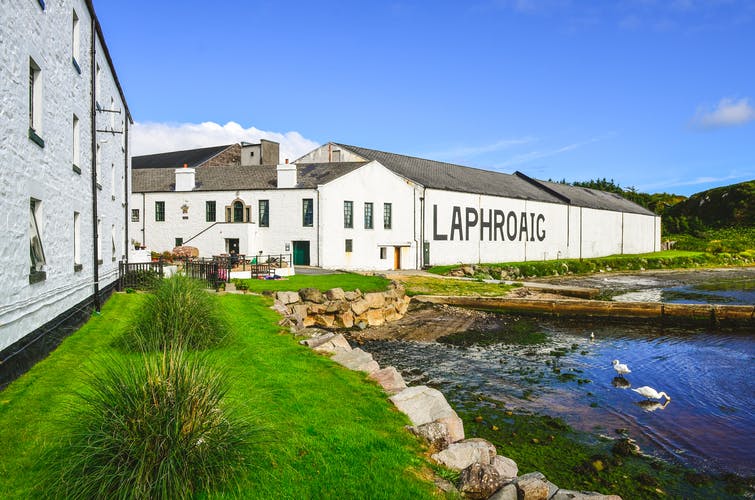
Its malt, prized for its smoky and peaty character, caught the attention of the neighbours at Mackie and Co., owners of Lagavulin, who monopolised its production for their blends, leading to a shortage for Laphroaig’s single malt.
This conflict between Laphroaig and Mackie and Co. stretched into the early 20th century, placing the distillery in a fight for survival, especially due to issues with water and grain supplies.
In 1921, Ian Hunter, the last Johnston to lead Laphroaig, initiated significant modernisations, allowing the distillery to thrive once again.
Upon Hunter’s death in 1954, Elizabeth Leitch Williamson, known as Bessie, became the first woman to run a whisky distillery in this region of Scotland, a historic milestone for both Laphroaig and the industry.
Under the leadership of three successive directors, Laphroaig has solidified its reputation as one of the world’s most esteemed whiskies. Among the distillery’s iconic releases, Laphroaig 1974 remains a true monument of whisky, showcasing the excellence and unique character of the house. Today, the distillery retains a larger share of its production for its own expressions, selling much less distillate to independent bottlers than in the past.
Now, with its seven stills and a production capacity of over three million litres of alcohol, Laphroaig continues to honour its heritage while embracing the future.
A flagship whisky from the Laphroaig distillery
LAPHROAIG 10 ans

49.5 €
LAPHROAIG 10 YEARS OLD
This essential classic from the island of Islay is crafted for lovers of peated and maritime whiskies. It’s a must-have malt in any collection.
Displaying an old gold colour with greenish highlights, its generous nose reveals scents of peat, red fruits, liquorice, along with mentholated and wild notes. Around 20% of the barley is malted and peated on-site at the distillery, giving it a more medicinal and tarry profile, blended with iodised notes, in an explosive aromatic cocktail that leaves no one indifferent!
On the palate, it confirms the aromas of the nose with an oily texture and a remarkable finish. A truly impressive malt, instantly recognisable from the very first nose.
The history of the GlenDronach distillery
In 1771, the construction of a house, initially called Boynsmill and later renamed Glen House by James Allardice in 1826, coincided with the establishment of the distillery, which obtained its official distillation licence in the same year.
This date marks the birth of one of the first licensed distilleries in Scotland, laying the foundation for its long history.
The acquisition of the distillery in 1830 by Walter Scott, a native of Teaninich, was merely the prelude to a remarkable upward journey.
By the 1860s, GlenDronach had established itself as the leading distillery in the Scottish Highlands, housing over 50 residents, including workers and their families.
In 1920, Captain Charles Grant, son of the founder of Glenfiddich, took the helm, before passing it on to William Teacher & Sons in 1960.
The latter company doubled the number of stills, further strengthening GlenDronach’s position in the industry.
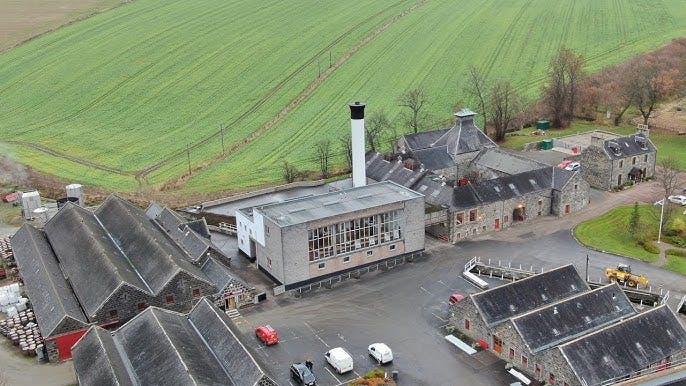
Despite a temporary closure in 1996 by Allied Distillers, the distillery resumed full production in 2002.
Shortly after, in 2005, GlenDronach modernised its still heating system, switching from coal to steam, becoming one of the last distilleries in the region to make this transition.
Just like Macallan, GlenDronach is renowned for the excellence of its sherry casks, which have shaped its identity and aromatic signature over time. More recently, the distillery has also begun producing a small quantity of peated whisky, adding a new dimension to its traditional craftsmanship.
In 2008, BenRiach Distillery Company Ltd acquired the distillery, opening a new chapter in its history, before Brown-Forman Corporation took over BenRiach Distillery Company Ltd, bringing GlenDronach, BenRiach, and Glenglassaugh into its prestigious portfolio of Scotch whiskies.
Today, GlenDronach produces over 1.4 million litres of alcohol annually, thanks to its four stills (two Wash Stills and two Spirit Stills).
A flagship whisky from the GlenDronach distillery
GLENDRONACH 12 YEARS OLD ORIGINAL
Rachel Barrie, master blender at GlenDronach, showcases her full expertise here in the art of sherry cask maturation, the distillery’s signature style.
This 12-year-old single malt, matured exclusively in Oloroso casks (offering notes of dried fruits and spices) and Pedro Ximenez casks (bringing touches of raisin and a liqueur-like texture), represents a return to the tradition of classic old-style Highland single malts.
The history of the Dalmore distillery
In 1839, Alexander Matheson founded The Dalmore distillery in an exceptional setting, choosing the shores of the Cromarty Firth, facing the Black Isle, rather than the Speyside region favoured by many other distilleries for its logistical advantages.
Twenty-eight years later, in 1867, management passed to the brothers Andrew and Charles Mackenzie, marking the introduction of the brand’s iconic symbol, the 12-point Royal Stag, on every bottle of The Dalmore.
This emblem has its roots in a legend from 1263, when Colin of Kintail, chief of the Mackenzie clan, saved King Alexander III of Scotland from a charging stag. In gratitude, the king allowed the Mackenzie clan to bear the emblem of the 12-point royal stag on their crest.
The distillery’s history took a dramatic turn in 1917, when the U.S. Navy established a presence on the Scottish coast and requisitioned the distillery to manufacture naval mines.
In 1920, an accident at this facility triggered a violent explosion, destroying much of the distillery. After a long legal battle between the Mackenzies and the Royal Navy, the distillery was eventually rebuilt.
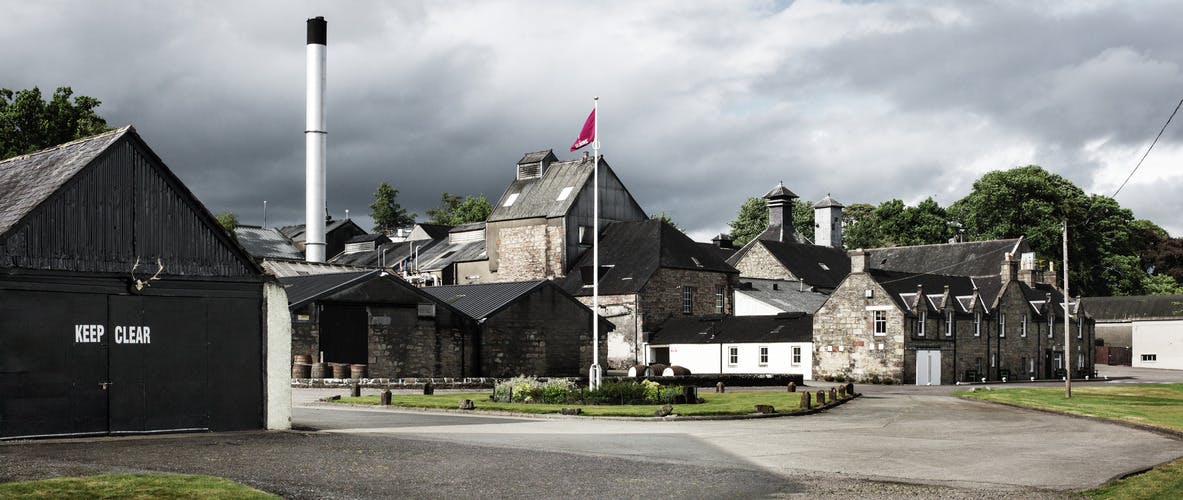
Following this, The Dalmore remained in the hands of the Mackenzie family until 1960, marking the merger between Mackenzie Brothers Ltd and Whyte & Mackay.
A few years later, in 1968, the distillery's history was shaped by the arrival of the legendary master blender Richard Paterson.
The influence of Richard Paterson, nicknamed "The Nose", former master blender of The Dalmore, is inseparable from the distillery’s story.
An innovator in cask maturation, he crafted some of the distillery's most renowned blends, making use of sherry, port, and wine casks, such as cabernet sauvignon. Among his signature creations are King Alexander III, Dalmore Gran Reserva, and the famous Dalmore 12 Year Old.
Today, The Dalmore distillery, equipped with eight stills (four Wash Stills and four Spirit Stills), boasts a production capacity exceeding 3.5 million litres of alcohol per year.
A flagship whisky from The Dalmore distillery
DALMORE 12 ans

84.9 €
DALMORE 12 ANS
Composed of a blend of 50% bourbon casks and 50% Oloroso sherry casks, The Dalmore 12 Year Old impresses with its elegance and complexity.
The sherry influence is very expressive, with nutty and marmalade notes that perfectly enhance the malty cereal aromas.
Round and generous, the palate is intense and indulgently extends towards a finish marked by refreshing menthol tones and a delicate saline note. A majestic single malt that lives up to its reputation.
To explore Scotch whisky further
La Maison du Whisky has three boutiques in Paris:
In each of these boutiques, you'll find a wide selection of whiskies, rums, sakes, and other fine spirits.
Because a whisky can be described in a thousand words, our experts will be delighted to guide you through the must-try Scotch whiskies at La Maison du Whisky.
Follow our tasting calendar for upcoming events, or visit the Golden Promise Whisky Bar, which offers an extensive selection of whiskies and other spirits by the glass.
Written by
- Quentin JEZEQUEL - SEO project manager at LMDW.
Verified by
- Didier GHORBANZADEH - Wine & Spirits Expert at LMDW
- Clotilde NOUAILHAT - Editorial and Corporate Communications Manager at LMDW


